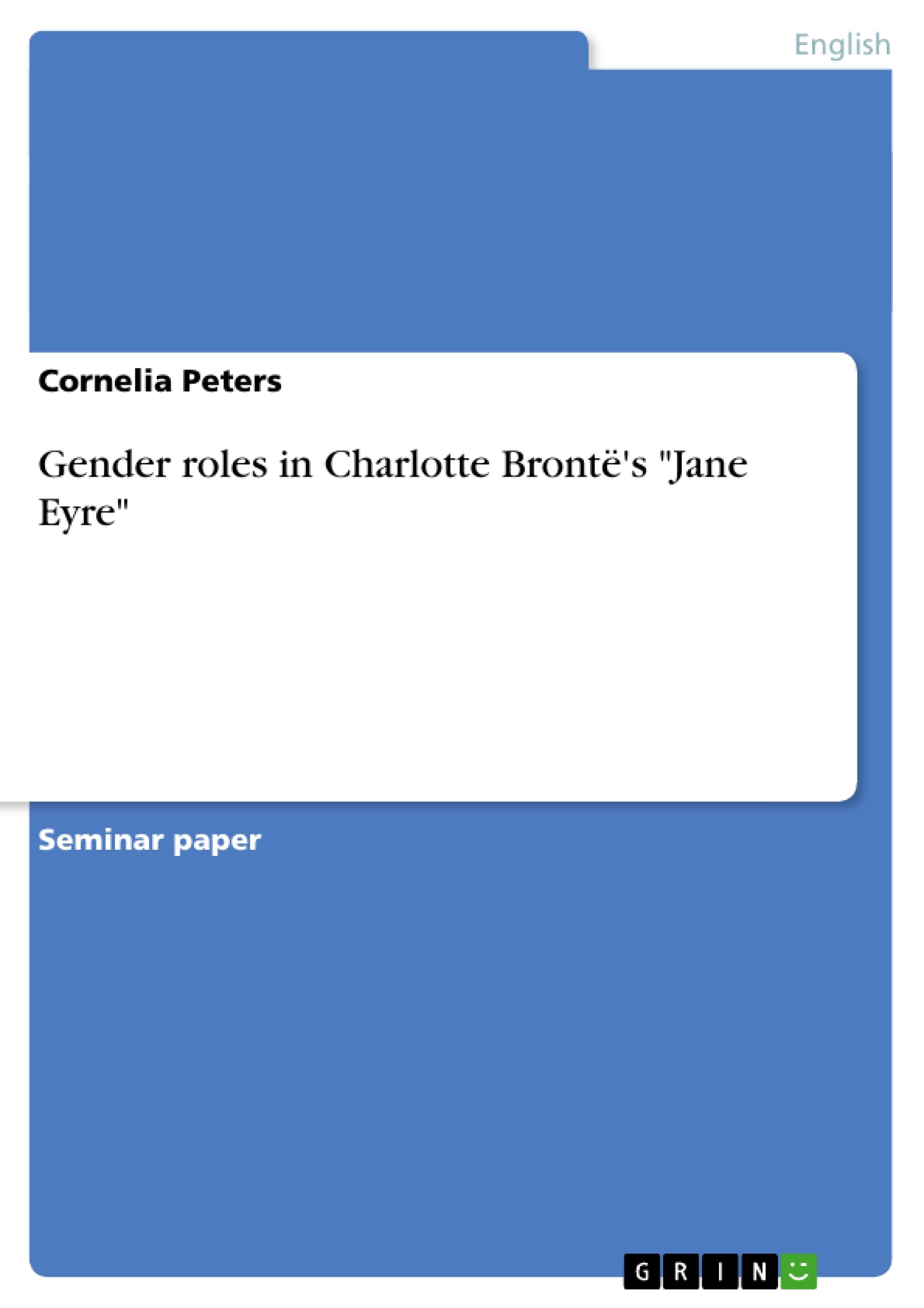Introduction
In order to gain a broader understanding of Charlotte Brontë′s description of her characters in "Jane Eyre", I consider it necessary to take a close look at the social and economic conditions in Great Britain in the 19th century. Charlotte′s objectives and their realisation can only be understood against the framework of outer conditions and limitations the author as well as her characters were exposed to. Writing about people of her own time naturally gives an author first-hand authenticity and a close insight into contemporary views. However, it may also limit her point of view to her own personal sphere which may be, as in the case of CharlotteBrontë, influenced by her upbringing and limited by many material and social restraints. Therefore, a look at the overall conditions of life in Great Britain during the Early Victorian Age may make the author′s choice of characters and events as well as any omissions she intentionally or unintentionally made, more understandable.
Inhaltsverzeichnis (Table of Contents)
- Introduction
- Social and Economic Conditions in Great Britain during the First Half of the 19th Century
- The Industrial Development
- Emergence of a Working Class
- A Growing Middle Class
- The Upper Classes
- Male Characters in "Jane Eyre"
- The Upper Class Heir: John Reed
- The Medical Profession: Mr. Lloyd
- Education and the Clergy: Mr Brocklehurst
- The Upper Class Missionary: St. John Rivers
- A Flawed Hero: Mr. Rochester
- Female Characters in "Jane Eyre"
- The English Gentlewoman: Eliza and Georgiana Reed
- A Shining Example: Diana and Mary Rivers
- The Governess: Jane Eyre
- Charlotte Brontë and the start of a feminine tradition
- Primary Literature
- Secondary Literature
Zielsetzung und Themenschwerpunkte (Objectives and Key Themes)
This paper aims to analyze the portrayal of gender roles in Charlotte Brontë's "Jane Eyre" by examining the social and economic conditions of Great Britain in the 19th century. By understanding the historical context, we can gain a deeper understanding of Brontë's objectives and how she navigates the limitations imposed on women during this era.
- Gender roles and societal expectations in 19th-century England
- The impact of social and economic change on individual lives and relationships
- The representation of different social classes in the novel
- The exploration of female agency and independence within a patriarchal society
- The role of education and religion in shaping individual perspectives
Zusammenfassung der Kapitel (Chapter Summaries)
The introduction establishes the importance of examining the historical context of 19th-century England to understand the characters and events in "Jane Eyre." It highlights the impact of industrial development, the emergence of a working class, the growth of the middle class, and the enduring power of the upper classes.
The following chapters delve into the male and female characters of the novel, analyzing their social roles and motivations within the context of their respective classes. This analysis includes a discussion of John Reed, Mr. Lloyd, Mr. Brocklehurst, St. John Rivers, and Mr. Rochester, representing various professions and social standings within the upper classes. The female characters, such as Eliza and Georgiana Reed, Diana and Mary Rivers, and Jane Eyre herself, exemplify different facets of womanhood in the 19th century.
Schlüsselwörter (Keywords)
Key concepts explored in this analysis include: Gender roles, social and economic conditions, class distinctions, female agency, education, religion, patriarchal society, and 19th-century England.
- Quote paper
- Cornelia Peters (Author), 1997, Gender roles in Charlotte Brontë's "Jane Eyre", Munich, GRIN Verlag, https://www.grin.com/document/28753




